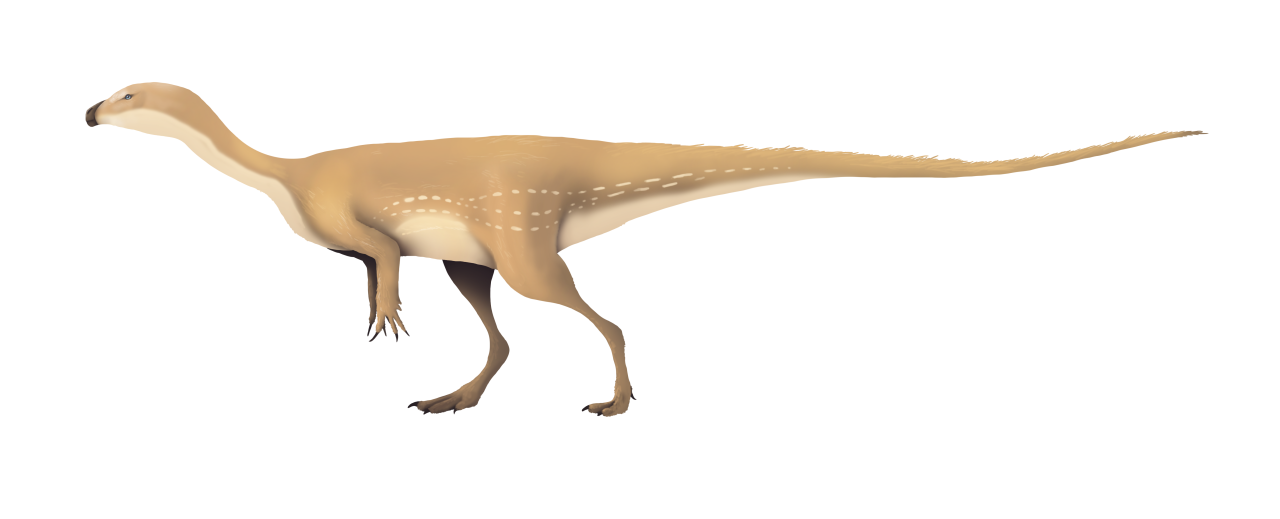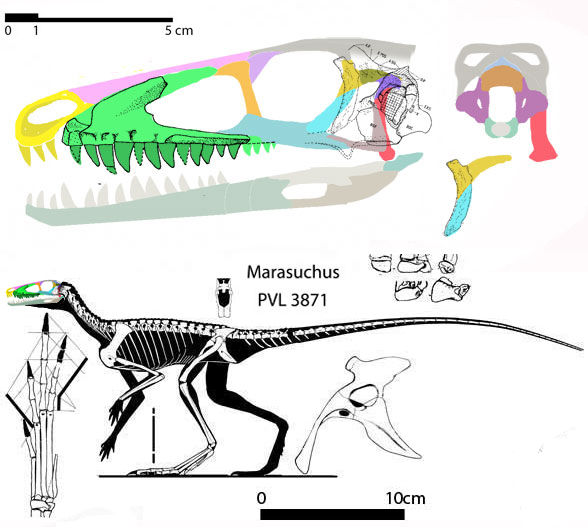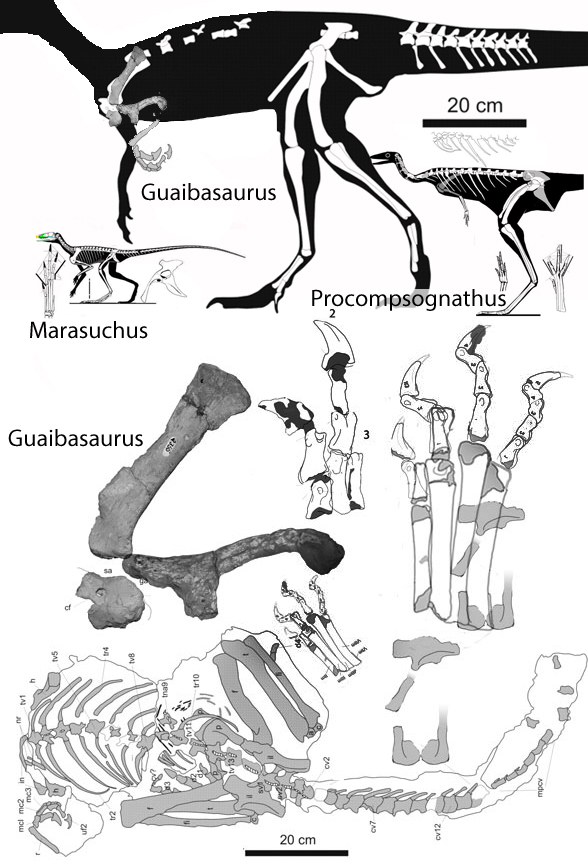[10000ダウンロード済み√] guaibasaurus 259106-Guaibasaurus
Guaibasaurus Động vật tuyệt chủng Động vật được mô tả năm 1999 Khủng long Nam Mỹ Sauropodomorpha Khủng long kỷ Tam Điệp Sơ khai Khủng long hông thằn lằn Thể loại ẩn Không có hình ảnh địa phương nhưng hình ảnh về WikidataGuaibasaurus candelariensis (UFRGS PV0725T), humeri and pectoral epipodium (AB) photographs and outline drawings of the humeri in lateralShop Guaibasaurus Basal Dinosaur Extinct Herbivore extinctherbivore pillows designed by DeWinnes as well as other extinctherbivore merchandise at TeePublic

Guaibasaurus Candelariensis Manus A C Photographs And Outline Download Scientific Diagram
Guaibasaurus
Guaibasaurus-Guaibasaurus is an extinct genus of basal dinosaur known from the Triassic of Rio Grande do Sul, southern Brazil GUAIBASAURUS Guaibasaurus is a genus of Guaibasauridae dinosaur, an ancient group of prosauropods that may have resembled theropods, but evolved into giants, like Diplodocus and Mamenchisaurus Unlike its much later relatives, Guaibasaurus was capable of moving bipedally, maybe even in high speed




Unaysaurus Alchetron The Free Social Encyclopedia
Media in category " Guaibasaurus " The following 9 files are in this category, out of 9 total Guaibasaurus candelariensispng 8,293 × 2,841;Fossilworks Guaibasaurus † Guaibasaurus Bonaparte et al 1999 (saurischian) Reptilia Saurischia Guaibasauridae PaleoDB taxon number Full reference J F Bonaparte, J Ferigolo, and A M Ribeiro 1999 A new early Late Triassic saurischian dinosaur from Rio Grande do Sol state, Brazil Proceedings of the Second GondwananGuaibasaurus, (meaning "Guaiba lizard"), was a basal dinosaur genus which lived during the Triassic period Its fossils were found in the geopark of Paleorrota, Rio Grande do Sul, Brazil Like Herreasaurus, this dinosaur had three full fingers and two vestigial ones on each hand
The most enigmatic of the saurischian taxa is, however, Guaibasaurus candelariensis, previously regarded as either a basal theropod or a basal sauropodomorphGuaibasaurus, (meaning "Guaiba lizard"), was a basal Saurischian dinosaur genus which lived during the Triassic period Its fossils were found in the geopark of Paleorrota, Rio Grande do Sul, Brazil Like Herrerasaurus, this dinosaur had three full fingers and two vestigial ones on each hand131 MB Guaibasaurus NTjpg 709 × 547;
A new specimen of Guaibasaurus candelariensis (basal Saurischia) from the Late Triassic Caturrita Formation of southern Brazil Historical Biology 19 73– DOI /Guaibasaurus candelariensis (Bonaparte et al, 1999;The basal dinosaur Guaibasaurus candelariensis Bonaparte, Ferigolo & Ribeiro, 1999 from the Late Triassic of south Brazil (Fig 1), has a short but confusing taxonomic history In the original description, Bonaparte et al (1999) regarded the taxon as a basal saurischian, more primitive than herrerasaurids, possibly theropod, and ancestral to



1




Unaysaurus Alchetron The Free Social Encyclopedia
Saturnalia is an extinct genus of basal prosauropod dinosaur from the Triassic of Rio Grande do Sul, southern Brazil The deposits are dated to the early Upper Triassic, about 225 million years ago (mya)The dinsaur grew to about 15 meters (5 ft) long Phylogeny The primitive nature of Saturnalia, and its mixture of sauropodomorph and theropod characteristics, has made it difficultThe saurischian taxa is, however, Guaibasaurus candelariensis, previously regarded as either a basal theropod or a basal sauropodomorph This study provides a detailed anatomical revision of all specimens originally referred to G candelariensis by Bonaparte and coauthors, including its typeseries and a more recently excavated partialGUAIBASAURUS CANDELARIENSIS was origin phylogenetically within saurischians, but basal to the ally described by Bonaparte et al (1999) as a very SauropodomorphaTheropoda split (Bonaparte et al primitive saurischian dinosaur from the Late Triassic 1999)




Juan C Opazo Untangling The Dinosaur Family Tree T Co Adfqpeoemq




Pretty Terrible At Being Lizards Guaibasaurus Candelariensis
Late Triassic) is known from an articulated skeleton lacking a neck and skullOriginally considered a basal theropod, later studies allied it with basal sauropodomorphs Here this specimen nests as a basal theropod in a rarely studied clade between Segisaurus and MarasuchusA pellvis with a tall ilium and long pubisThe Guabisaurus, a native of southern Brazil, was a basal dinosaur that lived during the Late Triassic period It lived approximately 2165 to 212 million years ago in the woodlands of South America, primarily Brazil The evolution of this dinosaur is key in analyzing early sauropodomorphs The discovery of FossilsGuaibasaurus (English Guaibasaurus) ଡାଇନୋସର ବଂଶର ଜୀବ ଅଟେ । ଏହି ଜୀବଟି ବର୍ତ୍ତମାନ ବିଲୁପ୍ତ । ଏହାର ଜୀବାଶ୍ମ ଓ ଅବଶେଷ ଦକ୍ଷିଣ ଆମେରିକାରୁ ମିଳିଥିଲା ।




Santanaraptor Alchetron The Free Social Encyclopedia




Dinosaur Ridge Christmas Time Is Here Again The Ancient Romans During This Time Of Year Had Their Own Celebration Called Saturnalia In Honor Of The God Saturn They Would Have A
Talk Guaibasaurus Back to page View source History This page uses content from Wikipedia The original article was at Guaibasaurus The list of authors can be seen in the page history As with Dinopedia, the text of Wikipedia is available under the GNU Free Documentation LicenseLate Triassic) is known from an articulated skeleton lacking a neck and skullOriginally considered a basal theropod, later studies allied it with basal sauropodomorphs Here this specimen nests as a basal theropod in a rarely studied clade In the large reptile tree (LRT, 1018 taxa) Guaibasaurus nests New Guaibasaurus remains have been found in Argentina, and show that the little primitive dino already slept in the same posture seen in Mei long and modern day birds




Guaibasaurus Candelariensis Ezequiel Vera Flickr



Guaibasaurus Pictures Facts The Dinosaur Database
Belongs to Guaibasaurus according to C Apaldetti et al 11 Sister taxa none Type specimen MCNPV 2355 Its type locality is west of Candelária, Sesmaria do Pinhal 2, which is in a Norian terrestrial horizon in the Caturrita Formation of Brazil Ecology Average measurements (in mm) femur length 2700, humerus length 1450, ulna length 9Guaibasaurus Bonaparte, Ferigolo & Ribeiro, 1999 † kingdom Animalia animals » phylum Chordata chordates » order Dinosauria dinosaurs » infraorder Theropoda ID Guaibasaurus is quite similar to Unaysaurus and Macrocollum, which are from the same Formation, although it is a little bit smaller But because the fossils refered to Guaibasaurus are too damaged (though reasonably complete if you consider all specimens), some key features are still ambiguous




Joschua Knuppe Results From The Paleostream This Whole Weekend Turned Out To Be Bonaparte Themed Guaibasaurus Clevosaurus Riojasuchus And Mussaurus All Three Known Ontogenetic Stages Paleoart Dinosaurs Triassic Animals Bonaparte




Guaibasaurus A Theropod Not A Sauropodomorph The Pterosaur Heresies
Guaibasaurus was a basal Saurischian that was discovered in Rio Grande do Sul, Brazil It is a early sauropodmorph related to Saturnalia Like Herrerasaurus, this dino had 3 full fingers and 2 vestigal ones on each handWikiZero Özgür Ansiklopedi Wikipedia Okumanın En Kolay Yolu Guaibasaurus candelariensis (Bonaparte et al, 1999, 07;




The Endocranial Anatomy Of Buriolestes Schultzi Dinosauria Saurischia And The Early Evolution Of Brain Tissues In Sauropodomorph Dinosaurs Muller 21 Journal Of Anatomy Wiley Online Library




Guaibasaurus Candelariensis Manus A C Photographs And Outline Download Scientific Diagram
A new specimen of Guaibasaurus candelariensis (basal Saurischia) from the Late Triassic Caturrita Formation of southern Brazil Historical Biology 19 73– DOI /121 KB Guaibasaurus skeletalgif 5 × 235;The precise phylogenetic position of Guaibasaurus is therefore still ambiguous, although it is clearly more closely related to eusaurischians than to herrerasaurids Moreover, if considered a theropod, Guaibasaurus is also the most basal member of the group since it lacks most synapomorphies of more derived Theropoda (Langer, 04)




File Guaibasaurus Skeletal Gif Wikimedia Commons




File Guaibasaurus Jpg Wikimedia Commons
This early dinosaur is known from a partial skeleton Scientists are not sure how it relates to later dinosaurs GUIABASAURUS Guaibasaurus is a genus of guaibasauridae dinosaur, an ancient group of prosauropods that may have resembled theropods, but evolved into giants, like Diplodocus and Mamenchisaurus Unlike its much later relatives, Guaibasaurus was capable of moving bipedally, maybe even in high speed Reaching 23 meters in length, it was aGuaibasaurus („ještěr od řeky Rio Guaiba") byl bazálním plazopánvým dinosaurem, žijícím v období svrchního triasu (asi před 221 až 210 miliony let) na území dnešního Geoparku Paleorotta v Rio Grande do Sul ()Dinosaurus měl na každé přední končetině tři plné prsty a dva redukované prsty, stejně jako vývojově primitivní teropod Herrerasaurus



1



1
(07) A new specimen of Guaibasaurus candelariensis (basal Saurischia) from the Late Triassic Caturrita Formation of southern Brazil Historical Biology Vol 19, Early Dinosaur Evolution, pp 73Guaibasaurus candelariensis from the late Triassic of Brazil A Saurischian of some sort, apparently more primitive than Herrerasaurus and StaurikosaurusIt is known from two incomplete skeletons The reconstruction of the head is hypothetical as no skull has been foundGuaibasaurus byl bazálním plazopánvým dinosaurem, žijícím v období svrchního triasu 1 na území dnešního Geoparku Paleorotta v Rio Grande do Sul Dinosaurus měl na každé přední končetině tři plné prsty a dva redukované prsty, stejně jako vývojově primitivní teropod Herrerasaurus Typový exemplář G candelariai byl popsán v roce



Guaibasaurus Dinosaur




File Guaibassauro Em Candelaria Cropped Png Wikipedia
Guaibasaurus was described based on the holotype (MCN PV 2355) and the paratype (MCN PV 2356), and a few years later the referred specimen (UFRGS PV 0725T) was found and published It was a mediumsized sauropodomorph (c 27 meters long based on the largest specimen)Elaf Guaibasaurus (sinif "lasär di Guaiba") äbinom dinosaur primöfik grupa Saurischia, kel älifon dü TriatFösils onik pätuvons in limatat Rio Grande do Sul, BrasilänÄs el Herrerasaurus, dinosaur at älabon doatis lölik kil, e doatis pülik tel, pö nam alikEl Guaibasaurus älabon geiloti meta 1,2, lunoti metas 3, e vetoti milgramas 100Guaibasaurus Name Homonyms Guaibasaurus Bonaparte, Ferigolo & Ribeiro, 1999 Bibliographic References Natl Sci Mus Monogr 15, October Neave, S A




This Is A Guaibasaurus In Pisa Dinosaurs




Guaibasaurus Natural History Museum
Guaibasaurus is known from fairly good remains, though the skull is unknown When first described, Guaibasaurus was considered to be a potential theropod dinosaur, though later a similarity with the primitive sauropodomorph dinosaur Saturnalia was noted, and now Guaibasaurus is usually seen as a very primitive sauropodomorph dinosaurGuaibasaurus candelariensis (Dinosauria, Saurischia) and the early origin of avianlike resting posture Alcheringa, 1–5 ISSN A specimen of the basal saurisquian Guaibasaurus




Haya Griva Wikipedia



Untitled Document



Dinoweb Guaibasaurus




Mesozoic Gallery Will Toosey Art




Guaibasaurus Candelariensis A C Left Scapulocoracoid Of Mcn Pv2355 Download Scientific Diagram




Amazon Com Guaibasaurus Apps Games




Guaibasaurus Wikipedia




File Guaibasaurus Candelariensis Png Wikimedia Commons




Prehistoric Animals Dinosaur Drawing Prehistoric




Guaibasaurus Instagram Posts Photos And Videos Picuki Com




Dinosaur People First 50 People




Marasuchus Guaibasaurus And Agnosphitys




Guaibasaurus By Cisiopurple On Deviantart




File Saltopus 0547 Jpg Wikipedia




Guaibasaurus Dinopedia Fandom




Joschua Knuppe Results From The Paleostream This Whole Weekend Turned Out To Be Bonaparte Themed Guaibasaurus Clevosaurus Riojasuchus And Mussaurus All Three Known Ontogenetic Stages Paleoart Dinosaurs Triassic Animals Bonaparte




Guaibasaurus Wikipedia




Skeletal Reconstruction Of Guaibasaurus Candelariensis A Preserved Download Scientific Diagram



Geol 104 Fc Theropoda I Dinosaurs Red In Tooth And Claw



Guaibasaurus Pictures Facts The Dinosaur Database




Elmisaurus Rarus Dinosaur Database Dinoanimals Com



Guaibasaurus Pictures Facts The Dinosaur Database




Marasuchus Guaibasaurus And Agnosphitys



Guaibasaurus Pictures Facts The Dinosaur Database




The Origin And Early Evolution Of Dinosaurs Langer 10 Biological Reviews Wiley Online Library




Guaibasaurus Candelariensis Wall Clock By Stavros Svensson Kundromichalis Society6




Explore The Best Guaibasaurus Art Deviantart




Guaibasaurus Alchetron The Free Social Encyclopedia




Geol 104 Sauropodomorpha Size Matters




Amazon Com Guaibasaurus Apps Games




Dinossauros Do Brasil Colecionadores De Ossos Facebook




Guaibasaurus Candelariensis Mcn Pv2355 Vertebrae A B Isolated Download Scientific Diagram




Artstation A Sleepy Baby Camila Alli Chair




Guaibasaurus Candelariensis By Maurissauro On Deviantart




New Species Reveal Guaibasaurus Candelariensis At Jurassic World Evolution Nexus Mods And Community




Guaibasaurus Reconstituicao De Guaibasaurus Em Resina De P Flickr




Pdf A Reassessment Of The Basal Dinosaur Guaibasaurus Candelariensis From The Late Triassic Caturrita Formation Of South Brazil




Suchomimus Dinosaur Artwork Print Framed Photos Cards



Guaibasaurus Pictures Facts The Dinosaur Database



Guaibasaurus Pictures Facts The Dinosaur Database



Guaibasaurus Pictures Facts The Dinosaur Database



Guaibasaurus




Pin Op Dinosaurs Skeleton And Skulls




Pretty Terrible At Being Lizards Efraasia Minor




Herbivore Dinosaur Pack 3 0 New Species At Jurassic World Evolution Nexus Mods And Community



Liliensternus




Joschua Knuppe Results From The Paleostream This Whole Weekend Turned Out To Be Bonaparte Themed Guaibasaurus Clevosaurus Riojasuchus And Mussaurus All Three Known Ontogenetic Stages Paleoart Dinosaurs Triassic Animals Bonaparte




Guaibasaurus Candelariensis Ezequiel Vera Flickr




Guaibasaurus



Untitled Document




Guaibasaurus Wikipedia




Guaibasaurus Candelariensis Wall Clock By Stavros Svensson Kundromichalis Society6




Guaibasaurus Dinosaur Dinosaur Fauna Animals




Guaibasaurus Dinosaurs Youtube



Guaibasaurus Pictures Facts The Dinosaur Database




Pdf A New Specimen Of Guaibasaurus Candelariensis Basal Saurischia From The Late Triassic Caturrita Formation Of Southern Brazil




Christopher Lenin A Pair Of Silesaurus Explore The Environments In Search Of Their Breakfast Tender Plants In The Morning To Fill Their Stomachs And Have A Great Day T Co Nnhkth1dqz Antofagasta



Dinosaurs Triassic Dinosaurs Triassic Era And Triassic Period




Guaibasauridae Instagram Posts Photos And Videos Picuki Com




Dino Ideas For 1 8 General Discussion Ludia Forums



Dinos Do Brasil



Guaibasaurus




Guaibasaurus Instagram Posts Photos And Videos Picuki Com




Footprints Of Large Theropod Dinosaurs And Implications On The Age Of Triassic Biotas From Southern Brazil Sciencedirect




Pdf Guaibasaurus Candelariensis Dinosauria Saurischia And The Early Origin Of Avian Like Resting Posture




Marasuchus Guaibasaurus And Agnosphitys




Guaibasaurus Candelariensis Ufrgs Pv 0725t A Right Ilium And Its Download Scientific Diagram



Guaibasaurus Pictures Facts The Dinosaur Database



Guaibasaurus Primal Rift




Guaibasaurus Coloring Pages Free Dinosaurs Coloring Pages Kidadl




Guaibasaurus Candelariensis By Acrosaurotaurus On Deviantart




Guaibasaurus Mesozoic Era Wiki Fandom



Guaibasaurus Pictures Facts The Dinosaur Database




Guaibasaurus Candelariensis Ufrgs Pv 0725t Partial Articulated Download Scientific Diagram



Geol 104 Fc Sauropodomorpha Super Size Me




Guaibasaurus Dinosaur Prehistoric Animals Ancient Animals Prehistoric Creatures



Benton Blogs Bristol Ac Uk Files 19 07 12complete Pdf




Skeletal Reconstruction Of Guaibasaurus Candelariensis A Preserved Download Scientific Diagram




Sacisaurus Alchetron The Free Social Encyclopedia




Guaibasaurus Candelariensis Laptop Sleeve By Stavros Svensson Kundromichalis Society6



Guaibasaurus Pictures Facts The Dinosaur Database




Chindesaurus Alchetron The Free Social Encyclopedia




Triassic Sauropodomorph Dinosaurs From South America The Origin And Diversification Of Dinosaur Dominated Herbivorous Faunas Sciencedirect




University Of Alberta Scientists Calculate Dinosaurs Need For Speed Faculty Of Science
コメント
コメントを投稿